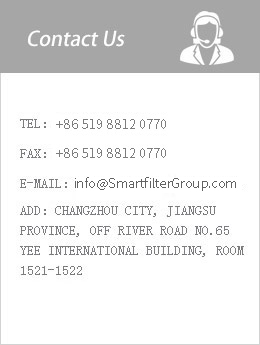
- A discussi...2025/4/18
- Spring Ren...2025/4/18
- The nation...2025/3/7
- Industrial...2025/3/7
- 2025 China...2025/2/14

The world economic recovery is sluggish
Since 2023, the sluggish recovery of the world economy has continued. The negative effects of interest rate hikes in developed economies on economic growth continue to emerge, uncertainties such as banking turmoil and persistent inflation increase the risk of economic recession, balance sheets of households, enterprises and other sectors are damaged, and the demand-side pressure has not eased since the second quarter. The Organisation for Economic Co-operation and Development's consumer confidence index came in at 98.2, back to its highest level in 15 months but still in contraction territory for the 21st month in a row. From the supply side, the global manufacturing economy has been in the contraction range for 9 consecutive months, J.P. Morgan manufacturing purchasing managers index (PMI) has been maintained at 49.6 from March to May, of which the new export orders index is only 47.3, falling to a new low in 9 months; Among developed countries on record, only Japan's May PMI was in expansionary territory. The WTO goods Trade barometer index released in May was 95.6, up slightly by 3.4 percentage points from the first quarter, and still below the trend level of 100. The global inflation level has maintained a high downward trend, and the IMF primary commodity price index in May was 158.3, a significant drop of 67.8 percentage points from the same period of last year, and basically returned to the level of the same period in 2021.
Overall macroeconomic recovery
China's macroeconomic overall continued to recover, production and domestic and foreign sales growth slightly accelerated compared with the first quarter, profit decline slightly narrowed compared with the first quarter, but compared with the same period last year, only the growth rate of domestic sales indicators increased, the growth rate of other major operating indicators slowed down. Statistics show that from January to April, the industrial added value of enterprises above designated size, the total retail sales of social consumer goods and the total exports (denominated in US dollars) increased by 3.6%, 8.5% and 2.5%, respectively, 0.6, 2.7 and 2 percentage points higher than the growth rate in the first quarter. Since the second quarter, the problem of insufficient orders in domestic and foreign markets has been highlighted, the improvement of corporate profits is weak, and the willingness to invest is sluggish. From January to April, the total profits of enterprises above designated size decreased by 20.6% year-on-year, which was only narrowed by 0.8 percentage points compared with the first quarter. The completed amount of fixed asset investment (excluding rural households) increased by 4.7% year-on-year, down 0.4 percentage points from the first quarter. China's manufacturing industry has fallen into the contraction range for two consecutive months, and the manufacturing purchasing managers' index (PMI) in May was 48.8%, the lowest level since this year, of which the number of enterprises reflecting "insufficient market demand" has accounted for nearly 60%.
The textile industry operates under pressure
Textile industry overall pressure operation. Thanks to the recovery and rebound of domestic consumption growth, domestic sales in the industry achieved better growth, the scale of the remaining operating indicators were reduced year-on-year, the quality and efficiency of operation declined, and the market performance was lower than expected during the peak season, which failed to change the industry's low operation situation. From the monthly trend, from January to April, the decline in industry production, exports and benefit scale narrowed slightly compared with the first quarter, and the growth rate of domestic sales accelerated slightly, but the decline in investment continued to deepen compared with the first quarter. Since the second quarter, textile enterprises have generally feedback on the lack of orders in domestic and foreign markets, and in the context of loose supply, market competition has intensified, it is difficult to raise the price of finished products, and cash flow deterioration is more obvious. The characteristics of the current market off-season are significant, the product shipment speed has slowed down, the start-up load of loom in some areas has been slightly reduced, the inventory of cotton textile finished products has accelerated, and enterprises generally reduce future market expectations.
Looking forward to the whole year, the market demand environment facing the textile industry is still complex. Domestic demand growth has more favorable factors, China's macroeconomic recovery trend, consumer confidence signs of improvement, clothing online consumption to maintain good vitality and other factors are conducive to the industry's domestic sales to maintain a warming trend, but the epidemic "scar effect" has not been completely eliminated, the current warming momentum still needs to be further stabilized. The external demand market environment is more severe, and the industry's exports are facing multiple challenges such as the impaired spending power of foreign consumers, the slowdown of buyers' orders and the deterioration of the trade environment, but the export pressure is expected to ease slightly with the reduction of the inventory level of brands. In addition, the decline of commodity prices and weak terminal demand, the high probability of the industry's finished product prices to maintain a weak market, coupled with relatively strong raw material prices, inventory depreciation risk will lead to enterprises difficult to improve the cash flow situation, if the end consumer demand is not significantly boosted, the industry profitability pressure will be throughout the year. Textile industry enterprises need to strengthen raw material procurement and finished product inventory management, resolve the risk of price fluctuations, pay attention to cash flow changes, further explore the international market, grasp the domestic market consumption hot spots, and smoothly through the recovery period.
Changzhou Xiahua Environmental Protection Technology Co., Ltd. specializes in the production and operation of industrial filtration materials for many years, mainly in the chemical industry, and the products are exported to many countries. Xiahua mainly produces the filter cloth, filter bag, pressure filter bag, etc., Xiahua filter cloth, use heart!







